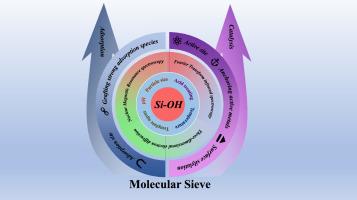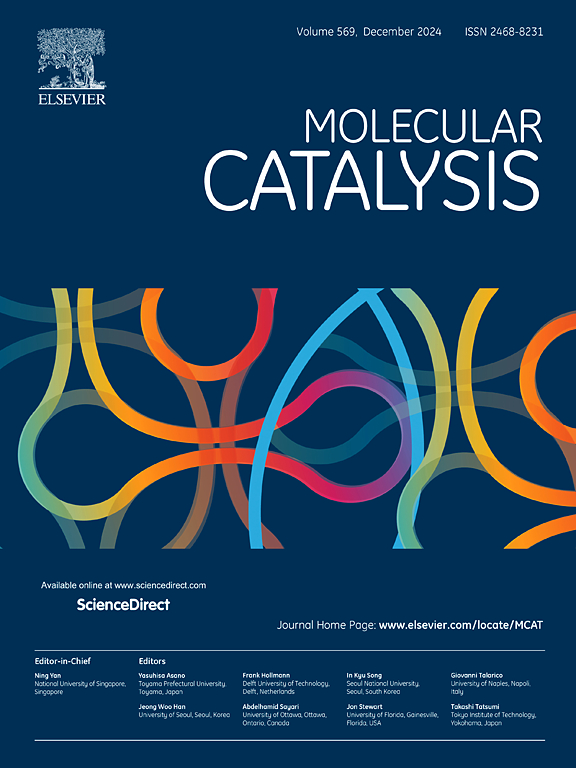用于吸附和催化的新兴分子筛调节策略:硅羟基工程
IF 3.9
2区 化学
Q2 CHEMISTRY, PHYSICAL
引用次数: 0
摘要
分子筛作为一种应用广泛的硅酸铝材料,可根据不同实际工况的要求进行改性以提高性能。硅羟基是分子筛的主要官能团之一,它对分子筛的独特化学特性和吸附能力至关重要,因为硅羟基具有固有的氢键,可以给分子筛提供更多的吸附和催化位点。此外,硅羟基对于调节分子筛的性能至关重要,是插入额外活性化合物的通道。各种调节策略包括接枝离子液体和有机分子,用来创建硅羟基巢穴,直接或间接锚定活性金属,以及形成硅羟基参与吸附和催化。本文总结了硅羟基的分类方法和表征技术,并综述了调节分子筛性能的介绍方法和应用。分析了调节硅羟基需要注意的关键因素。最后,讨论了硅羟基受控分子筛性能和应用的未来发展趋势。本文章由计算机程序翻译,如有差异,请以英文原文为准。

Emerging molecular sieve regulation strategy for the adsorption and catalysis: Silicon hydroxyl engineering
As a widely used aluminosilicate material, molecular sieves are modified to enhance performance according to the requirements of different practical working conditions. One of the main functional groups, the silicon hydroxyl group, is crucial to the unique chemical characteristics and adsorption capacity of molecular sieves, because of silicon hydroxyl group has inherent hydrogen bonding, which can give molecular sieves more adsorption and catalytic sites. Moreover, silicon hydroxyl groups are crucial for regulating the performance of molecular sieves and operate as a channel for the insertion of extra active compounds. Various regulating tactics include grafting ionic liquids and organic molecules, are utilized to create silicon hydroxyl nests to either directly or indirectly anchor active metals, and forming silicon hydroxyl groups to engage in adsorption and catalysis. The classification methods and characterization techniques of silicon hydroxyl groups have been summarized, and the introduction methods and applications in regulating the performance of molecular sieves have been reviewed. The key factors that need attention in regulating silicon hydroxyl groups have been analyzed. Finally, the development trend for the performance and application of silicon hydroxyl groups controlled molecular sieves in the future was discussed.
求助全文
通过发布文献求助,成功后即可免费获取论文全文。
去求助
来源期刊

Molecular Catalysis
Chemical Engineering-Process Chemistry and Technology
CiteScore
6.90
自引率
10.90%
发文量
700
审稿时长
40 days
期刊介绍:
Molecular Catalysis publishes full papers that are original, rigorous, and scholarly contributions examining the molecular and atomic aspects of catalytic activation and reaction mechanisms. The fields covered are:
Heterogeneous catalysis including immobilized molecular catalysts
Homogeneous catalysis including organocatalysis, organometallic catalysis and biocatalysis
Photo- and electrochemistry
Theoretical aspects of catalysis analyzed by computational methods
 求助内容:
求助内容: 应助结果提醒方式:
应助结果提醒方式:


